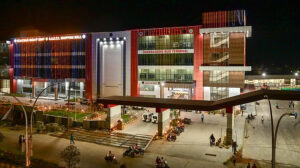Dengue fever has become a growing concern in Dakshina Kannada, with health officials reporting a significant increase in cases since the beginning of the year. According to the latest data from local health authorities, there have been a total of 198 confirmed dengue cases in the region since January, marking a worrying trend.
The spike in dengue cases has prompted health officials to intensify their efforts to control the spread of the disease. Speaking about the situation, Dr. Rajesh Kumar, the Chief Medical Officer of Dakshina Kannada, expressed his concern. He said, “We are closely monitoring the situation and taking all necessary measures to contain the spread of dengue. This includes conducting awareness campaigns, carrying out larvicide spraying, and ensuring proper sanitation in affected areas.”
Dengue is a mosquito-borne viral infection that causes flu-like symptoms, including high fever, severe headache, joint and muscle pain, and rash. In severe cases, it can lead to dengue hemorrhagic fever, which can be life-threatening.
The increase in dengue cases has been attributed to several factors, including the recent monsoon season, which created conducive breeding grounds for the Aedes mosquitoes, the primary vectors for dengue transmission. Additionally, public health officials have noted that a lack of awareness about preventive measures and delayed medical attention in some cases have contributed to the spread of the disease.
Local health authorities have urged residents to take preventive measures to protect themselves from dengue. These measures include:
- Eliminating mosquito breeding sites: Residents are advised to regularly empty and clean containers that can collect stagnant water, such as flower pots, old tires, and buckets.
- Using mosquito repellent: Applying mosquito repellent creams or sprays can provide protection against mosquito bites.
- Wearing protective clothing: Wearing long-sleeved shirts, pants, and socks can help reduce the risk of mosquito bites, especially during dawn and dusk when the Aedes mosquitoes are most active.
- Seeking medical attention: Individuals experiencing symptoms such as high fever, severe headache, and joint pain are urged to seek immediate medical attention. Early diagnosis and treatment are crucial for managing dengue effectively.
Local health authorities have also set up special dengue clinics in various parts of Dakshina Kannada to provide timely medical care to affected individuals.
Efforts are ongoing to raise awareness about dengue prevention through educational programs, community engagement, and outreach initiatives. Health officials are hopeful that with the cooperation of the community and effective control measures, the dengue outbreak can be brought under control in Dakshina Kannada.
Residents are encouraged to stay vigilant and take proactive steps to prevent dengue transmission, as the monsoon season continues to pose a risk for the spread of the disease in the region.









